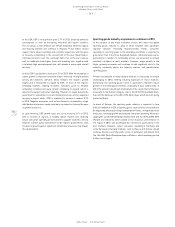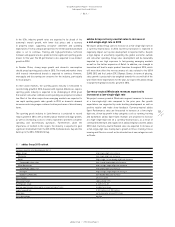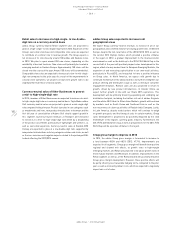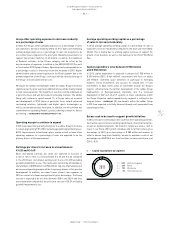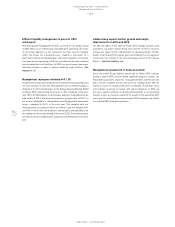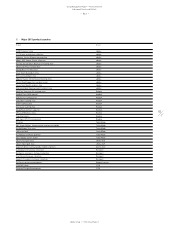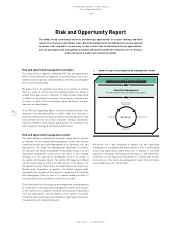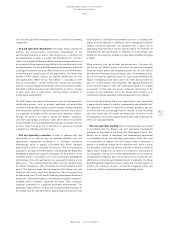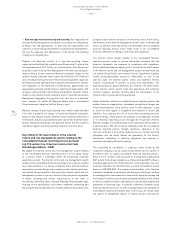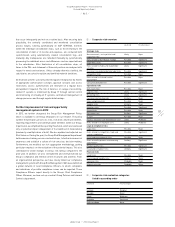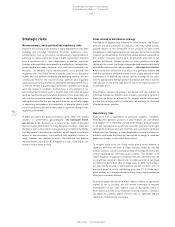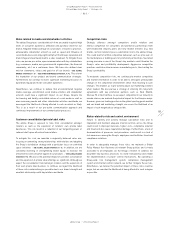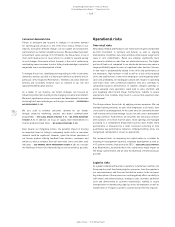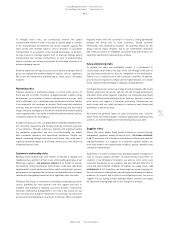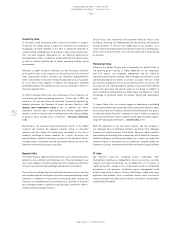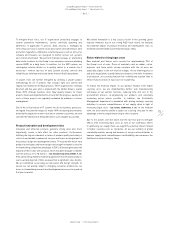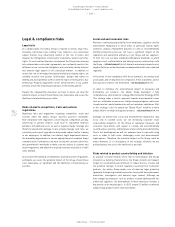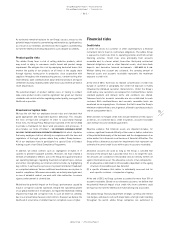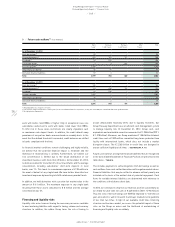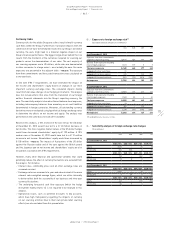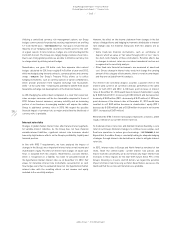Reebok 2012 Annual Report Download - page 190
Download and view the complete annual report
Please find page 190 of the 2012 Reebok annual report below. You can navigate through the pages in the report by either clicking on the pages listed below, or by using the keyword search tool below to find specific information within the annual report.
adidas Group
/
2012 Annual Report
Group Management Report – Financial Review
168
2012
/
03.5
/
Risk and Opportunity Report
/
Strategic risks
Strategic risks
Macroeconomic, socio-political and regulatory risks
Growth in the sporting goods industry is highly dependent on consumer
spending and consumer confidence. Economic downturns, socio-
political factors such as civil unrest, nationalisation or expropriation, in
particular in regions where the Group is highly represented, therefore
pose a significant risk to sales development. In addition, significant
changes in the regulatory environment (e.g. trade policies, tax legislation,
product quality and safety standards, etc.) could lead to potential cost
increases. To mitigate these macroeconomic, socio-political and
regulatory risks, the Group strives to balance sales across key global
regions and also between developed and emerging markets. We also
continuously monitor the macroeconomic, political and regulatory
landscape in all our key markets to anticipate potential problem areas,
so that we are able to quickly adjust our business activities accordingly
upon any change in conditions. Furthermore, a core element of our
positioning in performance sports is the utilisation of an extensive global
event and partnership portfolio where demand is more predictable and
less sensitive to macroeconomic influences. In addition, building on our
leading position within the sporting goods industry, we actively engage
in supporting policymakers and regulators to liberalise global trade,
curtail trade barriers and pro-actively adapt to significant changes in the
regulatory environment.
In 2013, we expect the global economy to grow, albeit with varying
degrees of performance geographically
/
SEE SUBSEQUENT EVENTS
AND OUTLOOK, P. 157. However, as a result of the highly challenging
macroeconomic environment in many European countries, Japan and
the USA as well as the political and regulatory uncertainty in the Middle
East and several Latin American countries, we still regard the potential
impact of macroeconomic, socio-political and regulatory factors as
major. Likewise, we continue to assess the likelihood that adverse
macroeconomic, socio-political or regulatory events could impact our
business to that extent as likely.
Risks related to distribution strategy
The inability to appropriately influence in which channels the Group’s
products are sold constitutes a continuous risk. Grey market activity,
parallel imports or the distribution of our products on open online
marketplaces could negatively affect our own sales performance and the
image of our Group brands. Furthermore, weakly defined segmentation
and channel strategies could lead to an unhealthy utilisation of our
multiple distribution channels as well as strong retaliation from our
customers. As a result, the Group has developed and implemented clearly
defined distribution policies and procedures
/
SEE GLOBAL SALES STRATEGY,
P. 72 to avoid over-distribution of products in a particular channel and
limit the exposure to unwanted channels such as grey markets or open
marketplaces. In addition, we conduct specific trainings for our sales
force to appropriately manage product distribution and ensure that the
right product is sold at the right point of sale to the right consumer at
an adequate price.
Nevertheless, unbalanced product distribution and the inability to
effectively manage our different sales channels could have a significant
impact on the Group. As a result of the dynamic market environment
and the fast-changing world of online sales, we evaluate the likelihood
of materialising as possible.
Dependency risks
Risks arise from a dependence on particular suppliers, customers,
other business partners, products or even markets. An over-reliance
on a supplier for a substantial portion of the Group’s product volume,
or an over-dependence on a particular customer, increases the Group’s
vulnerability to delivery and sales shortfalls and could lead to significant
margin pressure. Similarly, a strong dependence on certain products or
markets could make the Group very susceptible to swings in consumer
demand or changes in the market environment.
To mitigate these risks, the Group works with a broad network of
suppliers and does not have a single-sourcing model for any key
product. Likewise, we utilise a broad distribution strategy which includes
further expanding our controlled space activities. This enables us to
reduce negative consequences resulting from sales shortfalls that can
occur with key customers. Specifically, no single customer of our Group
accounted for more than 10% of Group sales in 2012. Furthermore,
we consistently provide a well-balanced product portfolio with no
particular model or article contributing more than 1% to Group sales,
which enables us to minimise negative effects from sudden unexpected
changes in consumer demand.
Despite our global diversification, which reduces reliance on a particular
market as far as possible, we still remain vulnerable to negative
developments in key sales markets such as Russia/CIS, China or
North America as well as our important sourcing countries. Therefore,
we regard the potential impact of these risks as significant and the
likelihood of materialising as possible.


